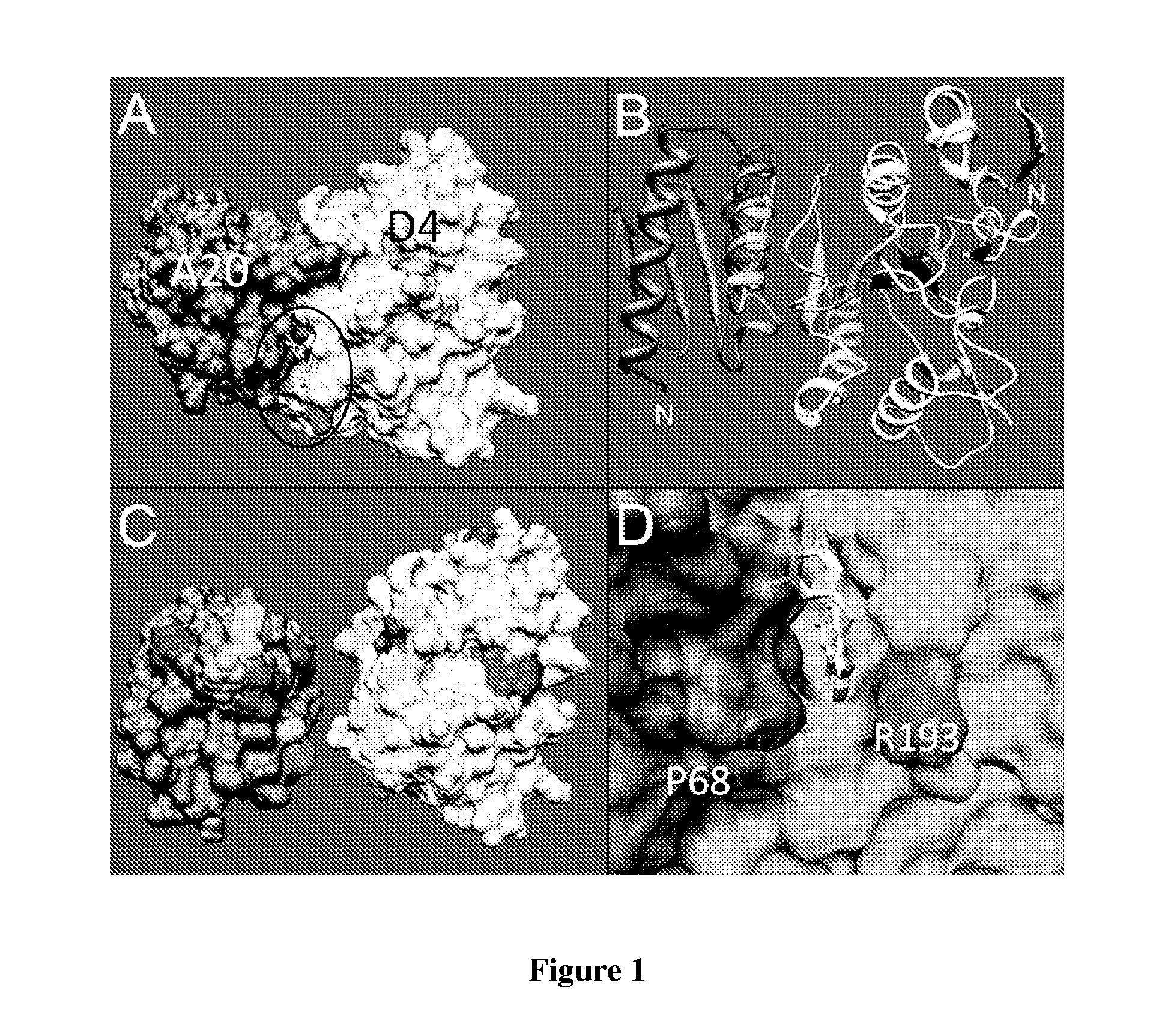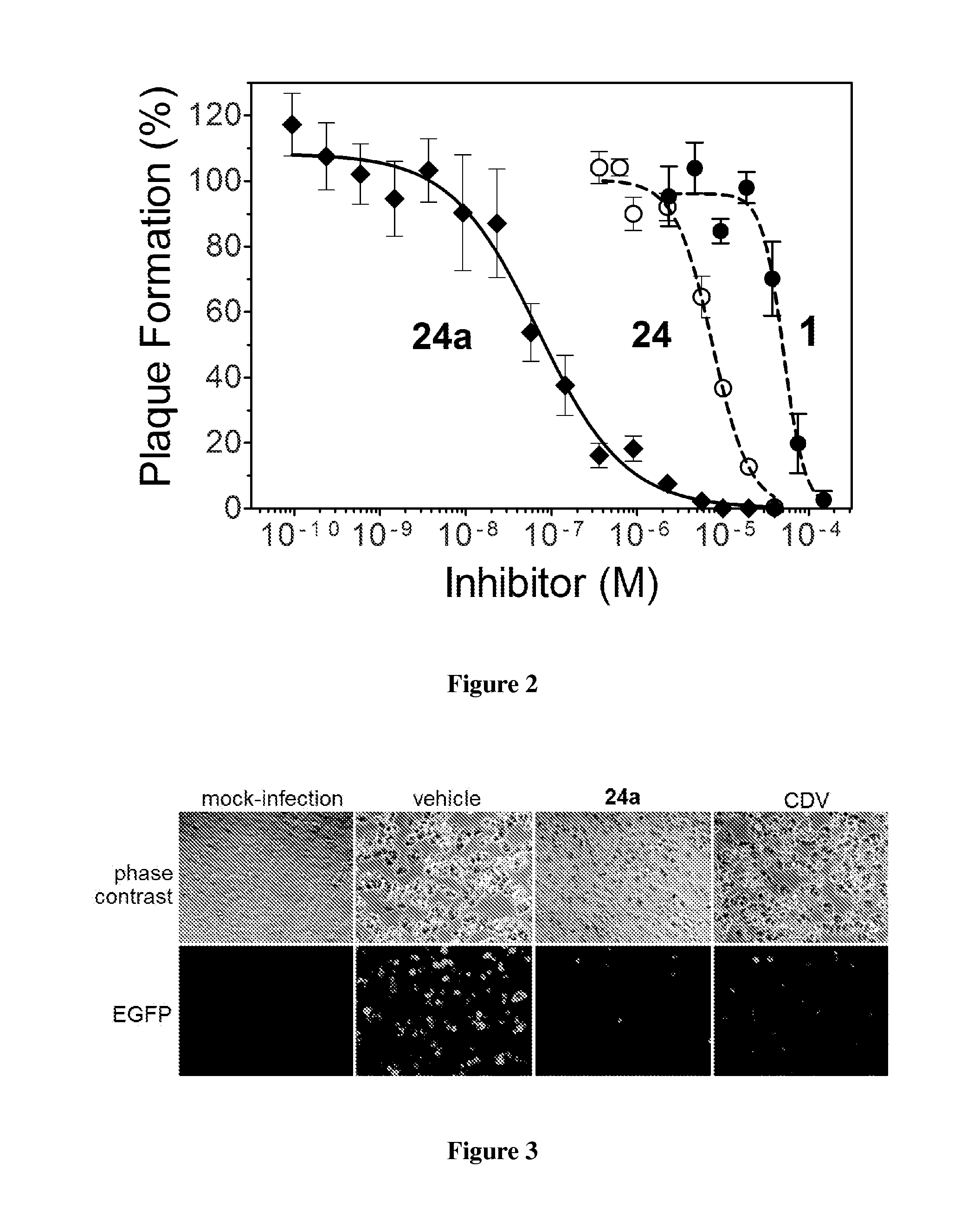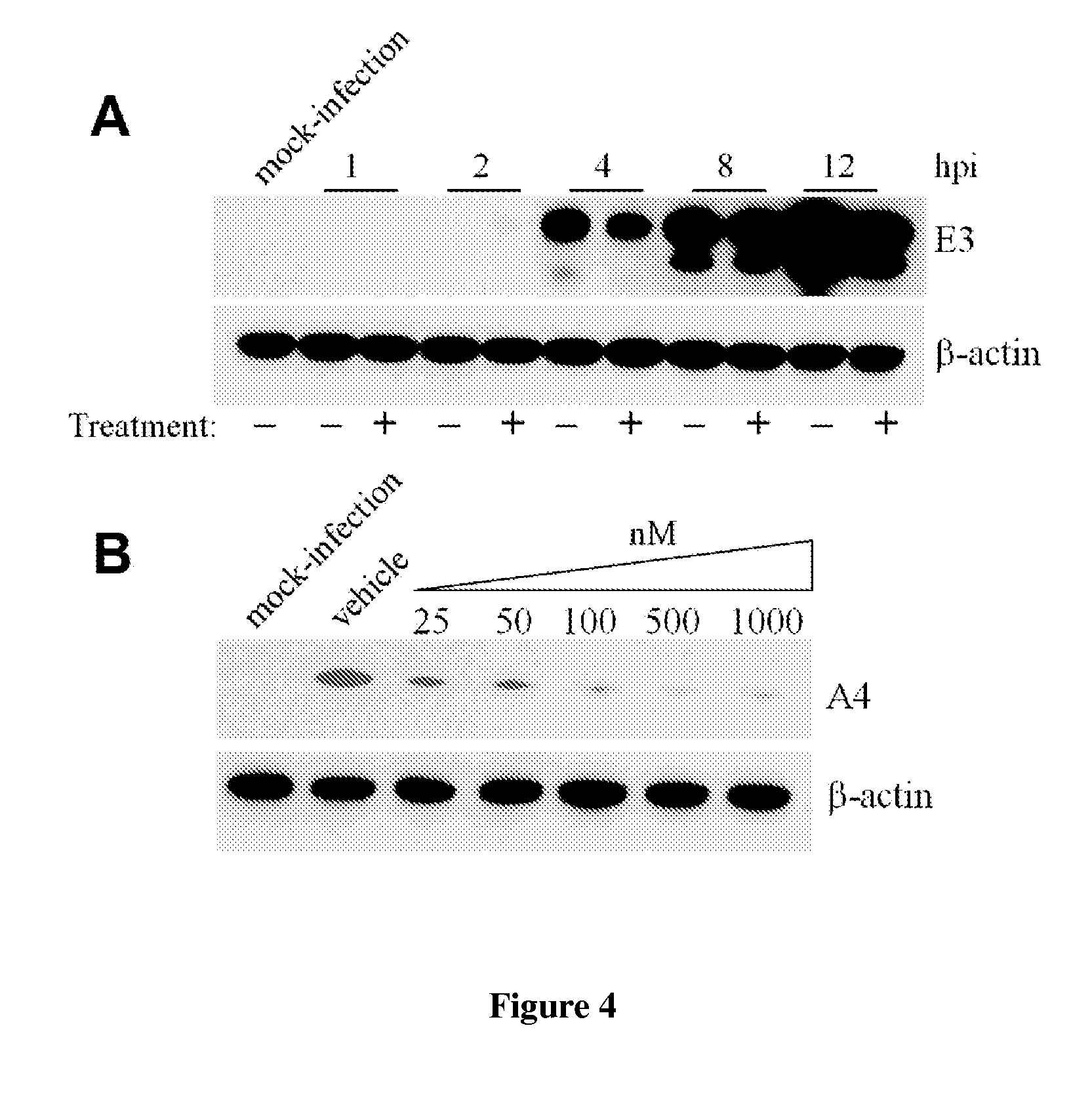Potent poxvirus inhibitor
a poxvirus and inhibitor technology, applied in the field of potent poxvirus inhibitors, can solve the problems that the timing required to develop immunity by vaccination might not be sufficient for a large portion of the population, and pose a bioterrorism threat, and achieve the effect of reducing, inhibiting or abrogating the activity of a dna polymeras
- Summary
- Abstract
- Description
- Claims
- Application Information
AI Technical Summary
Benefits of technology
Problems solved by technology
Method used
Image
Examples
example 1
Pyridine-2-sulfonyl chloride (43)
[0273]A solution of 2-mercaptopyridine (41) (20.0 g, 180.0 mmol) in 140 mL of conc. HCl and 20 mL of water was cooled to 0° C. Cl2 was bubbled through this solution for 2 h. A stream of N2 was then used to remove excess Cl2. The mixture was poured onto ice-water and dichloromethane was added. The reaction mixture was neutralized with solid NaHCO3 while maintaining the temperature at 0° C. by addition of ice. Two phases were separated and the aqueous layer was extracted with cold dichloromethane. The organics were dried over MgSO4, and concentrated in vacuo to provide 27.2 g (85%) of product 43 as a colorless oil which was used immediately. 1H NMR (300 MHz, CDCl3) δ 7.68-7.70 (m, 1H), 8.05-8.10 (m, 2H), 8.82-8.83 (m, 3H).
example 2
6-Methyl-1-(pyridin-2-ylsulfonyl)-1H-indole (44)
[0274]6-Methylindole (42) (7.34 g, 56.0 mmol) was added in portions to a mixture of sodium hydride (3.36 g, 84.0 mmol) in THF (80 mL) at 0° C. After 15 min, pyridine-2-sulfonyl chloride (43) (10.0 g, 56.0 mmol) was added, and the reaction was allowed to warm to rt and stirred overnight under N2. The reaction mixture was then quenched with ice water and extracted with EtOAc. The organic layers were combined, dried over MgSO4, and concentrated in vacuo. The crude product was purified by flash column chromatography eluting with a linear gradient ranging from 0 to 40% EtOAc-hexanes to provide 8.8 g (57%) of product 44 as a brown gum. 1H NMR (300 MHz, CDCl3) δ 2.44 (s, 3H), 6.62 (dd, J=1, 4 Hz, 1H), 7.03-7.06 (m, 1H), 7.41 (d, J=8 Hz, 1H), 7.41-7.45 (m, 1H), 7.59 (d, J=4 Hz, 1H), 7.79-7.81 (m, 1H), 7.84-7.90 (m, 1H), 8.10 (dt, J=1, 8 Hz, 1H), 8.58-8.60 (m, 1H). LC-MS (CI): m / z 273.0 [(M+H)+ C14H12N2O2S requires 272.06].
example 3
Methyl 3-(6-methyl-1-(pyridin-2-ylsulfonyl)-1H-indol-2-yl)acrylate (45)
[0275]In a sealed tube, 44 (9.60 g, 35.2 mmol), copper (II) acetate monohydrate (14.05 g, 70.4 mmol), and PdCl2(CH3CN)2 (0.91 g, 3.5 mmol) were placed under a nitrogen atmosphere. Acetonitrile (60 mL) was added followed by methyl acrylate (9.52 mL, 105.6 mmol). The mixture was heated at 110° C. for 20 h, allowed to reach rt, diluted with EtOAc, and washed with water and brine. The combined organic layers were dried over MgSO4, and concentrated in vacuo. The crude product was purified by flash column chromatography eluting with a linear gradient ranging from 0 to 20% EtOAc-hexanes to provide 3.86 g (30%) of product 45 as a pale yellow solid. 1H NMR (300 MHz, CDCl3) δ 2.46 (s, 3H), 3.81 (s, 3H), 6.39 (d, J=16 Hz, 1H), 6.97 (s, 1H), 7.06-7.08 (m, 1H), 7.39 (d, J=8 Hz, 1H), 7.40-7.45 (m, 1H), 7.84-7.90 (m, 1H), 7.94-7.96 (m, 1H), 8.06 (dt, J=1, 8 Hz, 1H), 8.42 (d, J=16 Hz, 1H), 8.52-8.54 (m, 1H). LC-MS (CI): m / z 357....
PUM
 Login to View More
Login to View More Abstract
Description
Claims
Application Information
 Login to View More
Login to View More - R&D
- Intellectual Property
- Life Sciences
- Materials
- Tech Scout
- Unparalleled Data Quality
- Higher Quality Content
- 60% Fewer Hallucinations
Browse by: Latest US Patents, China's latest patents, Technical Efficacy Thesaurus, Application Domain, Technology Topic, Popular Technical Reports.
© 2025 PatSnap. All rights reserved.Legal|Privacy policy|Modern Slavery Act Transparency Statement|Sitemap|About US| Contact US: help@patsnap.com



